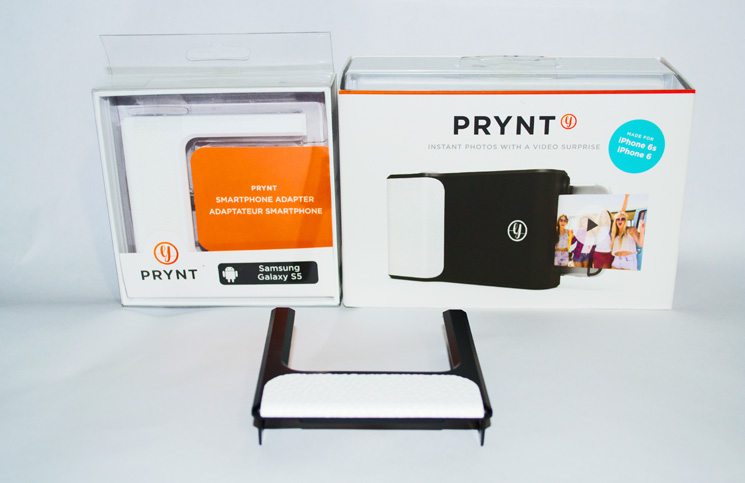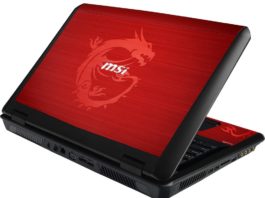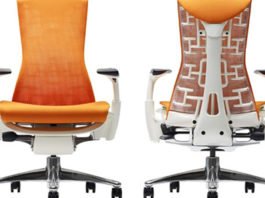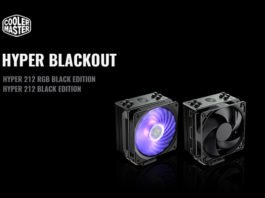Introduction
Today we have something a little different for your consideration – the Prynt is a gadget that turns your mobile phone into a portable printer, but better than that, when you scan the new photo with the app the image comes alive, playing back about 4 or 5 seconds of video and audio. It’s not a new gadget having been released last spring/summer and sadly it’s not cheap. It retails at around £130 on Amazon with a 40-sheet pack of printer paper costing £20.
It’s my first time playing with augmented reality tech and luckily I was the only person in the office with a compatible smartphone. Yep, it’s only available for iPhone 5 and 6 variants with an adapter available for Samsung Galaxy S5 but of course they are working on making sure it’s compatible with the iPhone 7 as quickly as possible and there are stories online of other models of Android phone working with a bit of a wiggle and some wishful thinking, still it’s a very limited audience for something that I think a lot of people, especially children and young adults, would be up for trying.
Features and Specifications
The features and specifications aren’t listed as such but here’s what I found with a bit of digging.
| Product | Height | Width | Length | Weight |
| Prynt Case | 1.3” / 3.3cm | 3.4” / 8.7cm | 5.5” / 13.98cm | 0.55 lb / 254g |
| Prynt Adapter | 0.2” / 0.5cm | 3.4” / 8.7cm | 5.5” / 13.98cm | 0.5 lb / 23.5g |
| 40-pack ZINK® Sticker Paper | 0.7” / 1.8cm | 1.2” / 3.1cm | 3” / 7.6cm | 0.10 lb / 63g |
Closer Look
We can take a look up close and discover more about the Prynt, starting with the packaging which is very sturdy.
The outer cardboard cover opens out like a book and we might expect to find plenty of data and boasts about the capabilities of the Prynt, however we just see a string of photos and the not-so-subtle hint to use the app when looking at it. Incidentally, scanning with the app didn’t work for these inside images at all but the outer front and back showed a few seconds of video of the front and back cover. No Easter eggs here I’m afraid.
The inner case is mostly clear plastic and shows off the front of the unit rather nicely and you get to see the size of the print in real life. It’s pretty huge compared to the phone that it’ll be holding which is a shame if you were thinking of carrying this around with you.
In addition to the Prynt unit and USB cable you also get a pack of 10 sheets of Zink photo paper and a guide leaflet. Inside the adapter package is just the adapter itself, not even a sheet of paper to instruct you on usage, but then it’s a simple process so maybe a manual would be overkill.
Since the basic unit is made for the iPhone I had to use the adapter which retails at £19.99 to get it to run on Android. It was a simple process to install – just press in the tabs on the top and bottom of the existing iPhone adapter to release it and then swing the new one into position and press down.
Installing the phone itself couldn’t be easier, press the side button to open the phone slot and slide it in.
With the Prynt out of the box, your fears about portability are confirmed. It’s about as portable as a briefcase filled with sand. You ‘could’ carry it around without wires and use it, but it’s not very practical. Portability aside we see that the Prynt is a fairly simple thing. One button on the top to turn it on, an LED indicator next to it, and one button on the side which opens the slot for your phone on the back of the unit.
Paper is loaded through the flap at the back with the barcoded blue sheet on the bottom and the white paper on top (white side up, I got it wrong first time, hehe).
The port for attaching the included USB cable is on the bottom of the unit along with a reset button in case anything goes horribly wrong.
With the paper loaded and phone connected it was on to the app which was found in seconds on the app store with a search. I was a bit surprised that there was no QR code to link to the app but since the search was instantly successful it would make the QR code unnecessary.
Software
As mentioned, the Prynt only works with the app available from the App Store or Play Store depending on your OS. Once it’s installed and the phone is connected to the Prynt, it performed an update and I was ready to go.
You are told to make an account with Prynt and you’ll probably need to charge the unit up as well before you can use it. Sadly there’s no battery indicator which is a huge shame, I left it charging for a few hours until the red LED charge light went off but the only way to know that it’ll need charging again is when you get a pop-up on the app that tells you it can’t print something.
Thankfully you can use the app for recording photo-videos without the Prynt printer installed just by using the app on your phone so you can have a good play with it while it’s charging if you’re a bit impatient.
The opening screen gets you straight to where the action is; along the top, you have the flash control, camera switcher for front or back view and a limited menu option.
The main window is what the camera sees and there’s a big red button on the bottom row for recording. The first of the other options on the bottom are Gallery to see your previous clips.
The Gallery button opens up your file explorer to see what’s saved in your Prynt folder. If you use the app and want to print the images later this is where you will go to find said images.
In the Prynts tab, you can see what’s actually been printed along with stats.
The Activity window shows your photos on a public stream, I was getting some random ones from other people showing through and no indication of how I was connected to those people.
Scan is used to reveal the hidden video in printed physical photos.
Going back to that big red button, since this is the heart of the Prynt system, press it and record a few seconds of video then it will select the first image from the video as the photo. Press the button again and it’ll render that image and print it, but there are plenty of editing options for that photo before you do that; all you have to do is click the pen icon instead of the red button.
The Enhance tab gives you a few pre-set image adjustments to compensate or compliment the object or environment.
The Effects tab is where you will find arty black and white and other colour based effects.
Draw lets you do exactly that if you like a smiley face on your photo then this is where to come and draw with your finger.
The text is the fourth option and that again is pretty much self-explanatory. You also have other abilities like red-eye removal and so on.
Once you’re finished you click ‘Done’ and the app takes you to the window to print out the image.
Performance
With this being my first real peek at augmented reality technology I really wanted this gadget to do well. Getting set up was totally straightforward for anyone that’s used a printer or fax machine and I would expect even a total novice to get it right on their second attempt. The Prynt printer seemed to do everything that was asked of it but I did have a few issues with the software. I ended up resetting my phone to factory default and it worked almost perfectly after that so the original hiccups were down to something other than the Prynt app or printer.
After the reset the only problems I encountered were when I moved too quickly from scanning one printed image to another, then it’d give me a garbled mess or keep playing audio from one image but no video. Surprisingly enough there’s an option to mail yourself a print. Request a print through the app and your scannable photo arrives in the good old-fashioned post… and it’s a freebie! What arrives is a 4x6in postcard and it’s a nice bonus for anyone who wants to test what they will get if they choose to buy a Prynt.
When printing through the Prynt app though you get a small photo with dull colours but it’s still easy to make out your subject, it’s simply not as vibrant as the image on your phone. However, using the app to scan the photo it comes alive within a few seconds and plays back the video file with remarkable clarity. It’s not playing from the video stored on your phone, as shown when I scanned the front and back cover of the packaging, it works for any Prynt photo. My friend squealed with delight exclaiming that it’s Harry Potter since the videos repeat themselves like those in the posters and newspapers of the film series.
Conclusion
The Prynt printer is well constructed and looks good but even though it does exactly what it should there are still some sticking points. There’s no battery indicator to say how much charge is left, if any, so you may find yourself charging it unnecessarily; not a good idea if you want to maintain the health of the Li-Ion battery inside. Then there’s the sheer bulk of the printer – I get that it has to contain the workings and that these things get smaller over time but I really wouldn’t want to have to carry it around with me in the pub or a club or even a party. Lastly, the quality of the printed image is really quite dark and the colours are washed out.
The Prynt app itself is the key when it comes to whether or not the Prynt is a good idea well implemented. When you scan an image using the app it’s fantastic. The photo comes alive, changing into a repeating video – with audio – while the rest of your screen shows the table or wall or whatever is on your screen. The video is vibrant and clear and includes whatever sound was recorded, it’s all pretty magical really.
We should also discuss the cost – it’s £129.99 with 10 sheets of printer paper on Amazon as I write this, then the ongoing cost of £19.99 every time the paper runs out seems to me to be somewhat excessive. You can save a bit of money on paper, though; surprisingly if you order it through the Prynt app rather than for example Amazon you are only charged $19.99, saving you a couple of pounds depending on the conversion rate of your credit card.
Even though the app is great, it’s a bit hard to justify the cost of the hardware that supports it. And even if I could justify it, I can only recommend it to those who have a variant of the iPhone 5 or 6 or a Galaxy S5, with no other models of phone currently supported – officially that is – it’s a pretty limited target audience, after all, we’re talking phones that are up to 2 years old.
Of course with all that said, if the App is updated regularly and if they can work out compatibility with newer smartphones, then there is a strong reason to buy the Prynt. If you’re a gadget addict or party animal then it’s definitely something to bring out at a gathering which your friends are unlikely to have seen in the flesh. The ability to mail a print to anyone who can then scan it with the free app is a strong selling point – even if you don’t technically need to buy the Prynt to do so.
I would like to thank the people over at Prynt for sending me this Augmented Technology gadget and wish them every success for the future.
-
Performance
-
Design
-
Value
Summary
Pros:
– Unique gadget to introduce you and your friends to augmented reality,
– Prints on sticker photo paper to attach your memories where you want and keep them safe,
– Free weekly postage print to send to friends and family,
– 1 button operation to record photo/video Prynts
Cons:
– Expensive both to start and with ongoing costs to use
– Photos are very small, just 1.8×3.1cm
– No battery level indicator
– Very limited compatibility, only older phones and just one Android option.
– Prynt is large and cumbersome, not pocket-friendly

























